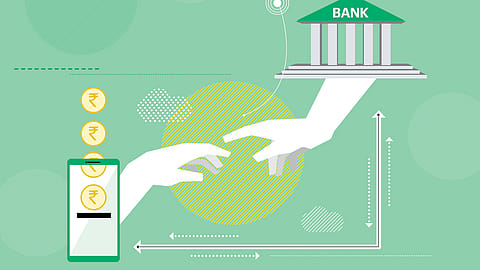Banking sector must grow faster than nominal GDP to drive Viksit Bharat mission: BCG-FICCI-IBA report
Currently, economies and their banking sector operate in a complex, multipolar world with volatile trade flows, shifting supply chains, and geopolitical risks.

For India to achieve its Viksit Bharat targets, banking assets must grow 3–3.5 percentage points faster than nominal GDP, according to a report jointly released by the Boston Consulting Group, Ficci, and the Indian Banks’ Association (IBA) on Monday. The report, titled ‘Charting New Frontiers’, highlights that India is at a pivotal turning point in its development path, where the next twenty years could transform its current momentum into lasting global leadership.
It recognises that its ambitious ‘Viksit Bharat Mission’ will depend on the growth of a strong, innovative, and resilient banking and financial sector capable of supporting India’s goals for sustainable, inclusive growth.
Currently, economies and their banking sector operate in a complex, multipolar world with volatile trade flows, shifting supply chains, and geopolitical risks. The combined disruption of AI/GenAI and shifting consumer expectations is unfolding on a scale never seen in the last few decades. The banking sector is poised to lead—it is profitable, well-capitalised, and highly valued. The report highlights that it will need to seize this opportunity by charting new frontiers.
According to the report, the bank lending mix has undergone significant changes over the past 14 years, with the share of corporate advances decreasing from 58% to 36%. Corporate funding has shifted away from banks toward capital markets and alternative funding avenues, such as private credit. Within bank funding, the mix is shifting towards short-term working capital compared to long-term capital expenditures (capex).
"Banks must re-engage in corporate credit, especially in infrastructure, manufacturing, and renewables that will define the nation’s future. At the same time, resilience has to be embedded as a core business priority, from managing climate risk to strengthening cyber defenses and operational continuity. The ability of our banking system to fund growth while safeguarding stability will be central to India’s journey toward a Viksit Bharat, says Jyoti Vyij, Director General, FICCI.
Recommended Stories
The report further stated that non-bank apps, especially UPI, are perceived to be more user-friendly and intuitive. However, customers still prefer to use their banks for loans and investments. "DPI 2.0 aims to achieve more complex use cases—consent management and lending. It will need to be designed in a manner that will enable frictionless transactions as with DPI 1.0," according to the report.
IBA chairman C.S. Setty said, “India’s Digital Public Infrastructure has revolutionised access through Aadhaar, UPI, and Jan Dhan, and the next frontier lies in DPI 2.0 platforms like account aggregator and Unified Lending Interface (ULI). To unlock their full potential, banks must go beyond transactions and deliver seamless, end-to-end digital experiences to the customers that combine trust, simplicity, and omni-channel support, leveraging GenAI as well. By doing so, banks can deepen inclusion, strengthen customer relationships, and create a truly world-class digital banking ecosystem.”
However, the report also stated that banks need to move beyond credit risk and manage emerging macro risks, such as climate, cyber, and geopolitical risks. Shared industry utilities, such as NPCI and credit bureaus, have done well in raising the standards of all participants in the financial sector. The banking sector will benefit from creating new utilities for emerging risks, such as climate finance and transaction monitoring.